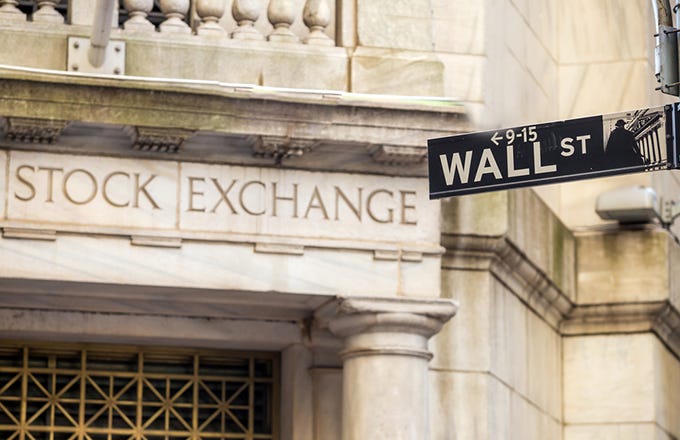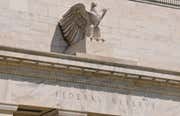
|
The term monetary policy refers to the actions the Fed takes in pursuit of price stability, maximum employment and moderate long-term interest rates. For example, the Fed uses monetary policy to control inflation and keep average prices stable. Normally, the Federal Open Market Committee sets monetary policy by choosing an interest rate. (For related reading, see What Methods Can the Government Use to Control Inflation?)
The Toolbox
The Fed has three main tools at its disposal to influence monetary policy:
Open Market Operations
The Fed constantly buys and sells U.S. government securities in the financial markets, which in turn influences the level of reserves in the banking system. These decisions also affect the volume and the price of credit (interest rates). The term open market means that the Fed doesn't independently decide which securities dealers it will do business with on a particular day. Rather, the choice emerges from an open market where the various primary securities dealers compete. Open market operations are the most frequently employed tool of monetary policy.
Setting the Discount Rate
The discount rate is the interest rate that banks pay on short-term loans from a Federal Reserve Bank. The rate is usually lower than the federal funds rate, although they are closely related. The discount rate is important because it’s a visible announcement of change in the Fed's monetary policy and it gives the rest of the market insight into the Fed's plans. The Federal Open Market Committee meets eight times a year to set the fed funds rate.
Setting Reserve Requirements
The Fed sets reserve requirements that specify the amount of physical funds that depository institutions are required to hold in reserve against deposits in bank accounts. The Fed also determines how much money banks can create through loans and investments. The Board of Governors has sole authority over changes in reserve requirements. Effective Jan. 1, 2018, the requirement is a reserve of 10% of deposits for banks with more than $115.1 million on deposit, and a reserve of 3% for banks with $115.1 million or less, but more than $15.5.
The Federal Funds Rate
The use of open-market operations is the most important tool for manipulating monetary policy. The Fed's goal in buying and selling U.S. government securities is to affect the federal funds rate – the rate at which banks borrow reserves from each other. The Federal Open Market Committee (FOMC) sets a target – or target range – for this rate, but not the actual rate itself (that’s determined by the open market). The target is what news reports are referring to when they talk about the Fed lowering or raising interest rates.
All banks are subject to reserve requirements, but they frequently fall below requirements in carrying out day-to-day business. To meet requirements, they have to borrow from each other's reserves. This creates a market in reserve funds, with banks borrowing and lending as needed at the federal funds rate. The federal funds rate is important because by increasing or decreasing it, over time, the Fed can impact nearly every other interest rate charged by U.S. banks.
The FOMC uses its control of the federal funds rate “to promote effectively the goals of maximum employment, stable prices and moderate long-term interest rates” as mandated in the Federal Reserve Act.
The Federal Reserve: The FOMC Rate Meeting
-
 Personal Finance
Personal FinanceHow the Federal Reserve Affects Your Mortgage
The Federal Reserve can impact the cost of funds for banks and consequently for mortgage borrowers when maintaining economic stability. -
 Insights
InsightsHow Much Influence Does The Fed Have?
Find out how current financial policies may affect your portfolio's future returns. -
 Insights
InsightsHow the Federal Reserve Manages Money Supply
The Federal Reserve was created to help reduce the injuries inflicted during the slumps and was given some powerful tools to affect the supply of money. -
 Insights
Insights7 Misconceptions About The Federal Reserve
There are many fallacies about the Fed. The following misconceptions are among the most popular. -
 Trading
TradingWhy Interest Rates Have Been Low for So Long
Learn of several competing explanations about why the Federal Reserve has kept interest rates so low in the United States since 2008. -
 Insights
InsightsHow Monetary Policy Affects Your Investments
Monetary policy changes can have a significant impact on every asset class. investors can position their portfolios to benefit from policy changes and boost returns by being aware of the nuances ... -
 Insights
InsightsThe Federal Reserve System Affects You More Than You Might Think
How does the Federal Reserve System affect ordinary citizens? In more ways than you might realize.


